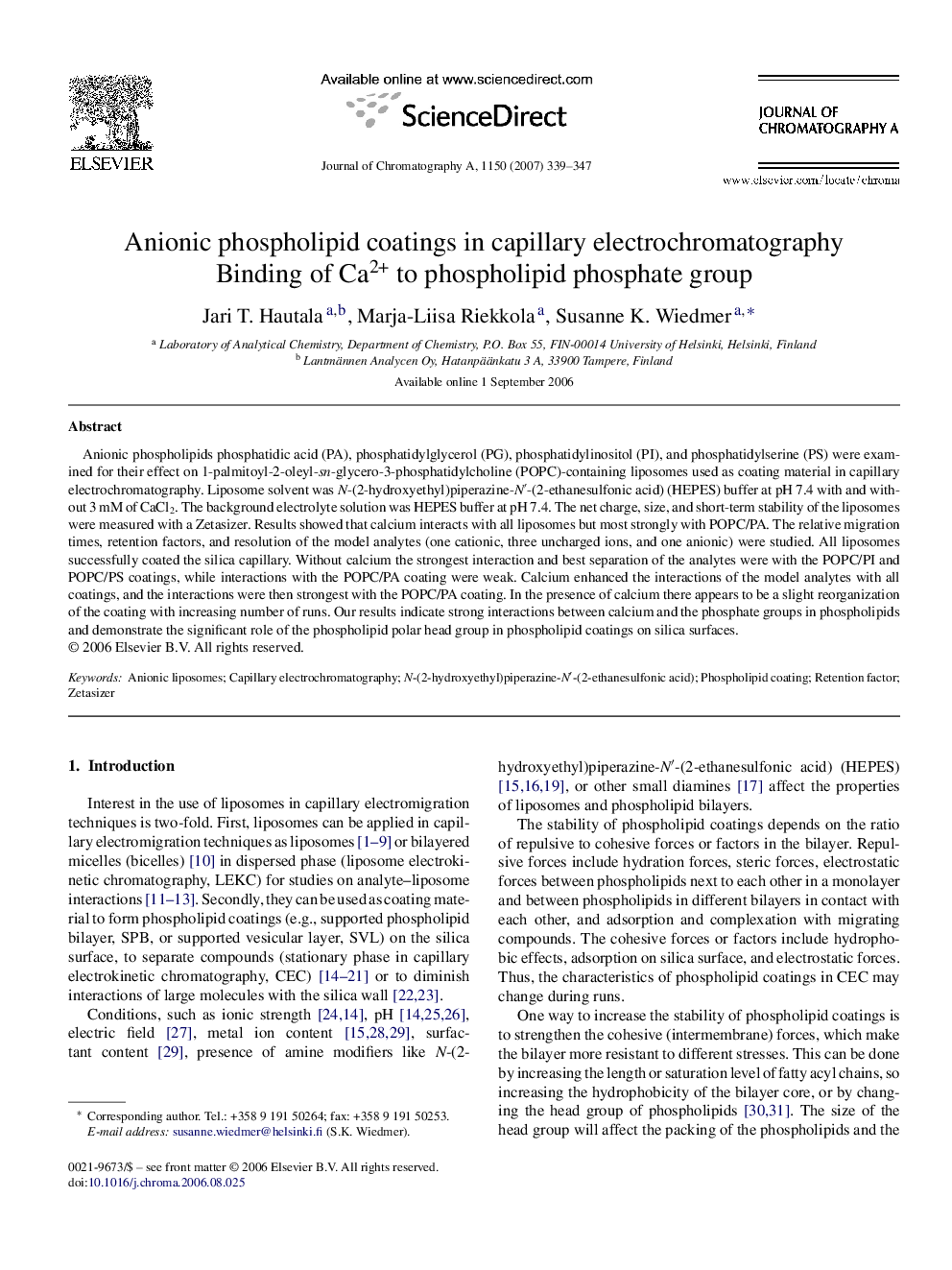| Article ID | Journal | Published Year | Pages | File Type |
|---|---|---|---|---|
| 1209138 | Journal of Chromatography A | 2007 | 9 Pages |
Anionic phospholipids phosphatidic acid (PA), phosphatidylglycerol (PG), phosphatidylinositol (PI), and phosphatidylserine (PS) were examined for their effect on 1-palmitoyl-2-oleyl-sn-glycero-3-phosphatidylcholine (POPC)-containing liposomes used as coating material in capillary electrochromatography. Liposome solvent was N-(2-hydroxyethyl)piperazine-N′-(2-ethanesulfonic acid) (HEPES) buffer at pH 7.4 with and without 3 mM of CaCl2. The background electrolyte solution was HEPES buffer at pH 7.4. The net charge, size, and short-term stability of the liposomes were measured with a Zetasizer. Results showed that calcium interacts with all liposomes but most strongly with POPC/PA. The relative migration times, retention factors, and resolution of the model analytes (one cationic, three uncharged ions, and one anionic) were studied. All liposomes successfully coated the silica capillary. Without calcium the strongest interaction and best separation of the analytes were with the POPC/PI and POPC/PS coatings, while interactions with the POPC/PA coating were weak. Calcium enhanced the interactions of the model analytes with all coatings, and the interactions were then strongest with the POPC/PA coating. In the presence of calcium there appears to be a slight reorganization of the coating with increasing number of runs. Our results indicate strong interactions between calcium and the phosphate groups in phospholipids and demonstrate the significant role of the phospholipid polar head group in phospholipid coatings on silica surfaces.
